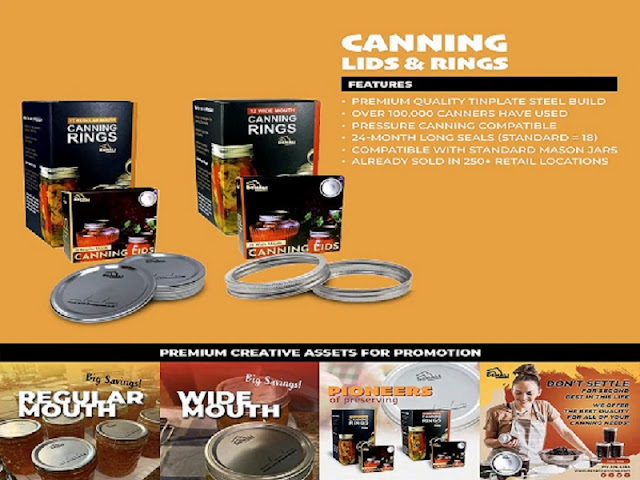How Vacuum Sealing Revolutionizes Food Storage?
Canning is a time-honored method of preserving food, ensuring that your favorite fruits, vegetables, jams, and more can be enjoyed long after peak season. At the heart of this process lies a simple yet fascinating scientific concept: the vacuum sealing of canning jars.
In this blog, we'll deeply dive into the science behind the sealing process, exploring why proper lid and ring placement are crucial for safe and successful canning.
The Importance of Sealing:
The primary goal of canning is to create a sealed, airtight environment within the canning jar. This tightly enclosed environment inhibits the development of dangerous germs like mold and bacteria that can ruin your preserved goods and pose health dangers. Achieving this seal relies on a combination of factors, with the canning jar lids and rings playing a pivotal role.
Role of Canning Jar Lids:
Canning jar lids are typically made of metal and have a rubberized sealing compound on the underside. Here's how they contribute to the sealing process:
Sealing Compound: The rubberized sealing compound on the underside of the lid is designed to create an airtight seal. This compound softens and adheres tightly to the jar's rim when heated during the canning process.
Vacuum Formation: As the contents of the jar heat up and expand during processing, the air inside the jar is pushed out. Once the jar is released from the canner and begins to cool, the contents contract, creating a vacuum. This vacuum pulls the lid downward, forming a tight seal.
Role of Canning Jar Rings:
Canning jar rings are often called bands or screw bands, maintaining the lids in place during the canning process. They are vital in securing the covers until the vacuum seal forms. Here's how they work:
Holding the Lid in Place: After placing the lid on top, the ring is screwed onto the jar. It has the cover firmly in position, ensuring it doesn't pop off due to pressure changes during processing.
Allowing for Expansion and Contraction: The ring should be tightened "finger-tight," meaning it's snug but not overly compressed. This allows for some movement during the heating and cooling process. If the ring is excessively tight, it might cause problems forming the vacuum seal.
The Science of Vacuum Sealing:
The critical scientific principle is the relationship between temperature, pressure, and volume. When you heat the contents of the jar, they expand, pushing out air and creating higher pressure inside the jar. As the jar cools, the contents contract, reducing pressure and volume. This change in pressure and volume creates a vacuum, pulling the lid down and forming an airtight seal.
Proper Lid and Ring Placement:
To ensure a successful seal and safe canning, it's essential to invest in wholesale canning lids and pay attention to proper lids and ring placement:
Clean Jar Rims: Before placing the lid on the jar, ensure that the jar rim is clean and free from any food residue or debris that could prevent a proper seal.
Finger-Tight Rings: When securing the ring, tighten it just enough to hold the lid in place. Avoid over-tightening, as this can hinder the formation of the vacuum seal.
Headspacing: Leave the recommended headspace (the space between the food and the lid) as specified in your canning recipe. Incorrect headspace can affect the seal.
Conclusion: Understanding the science behind canning jar sealing is critical to successful and safe food preservation. Proper lid and ring placement, combined with the principles of temperature, pressure, and volume, work together to create the vacuum seal that keeps your canned goods fresh and free from spoilage. So, the next time you embark on a canning adventure, remember that it's not just a culinary endeavor—it's a scientific one.


.jpg)

Comments
Post a Comment